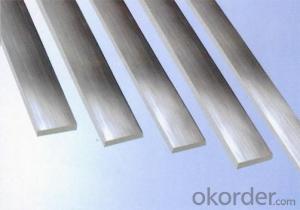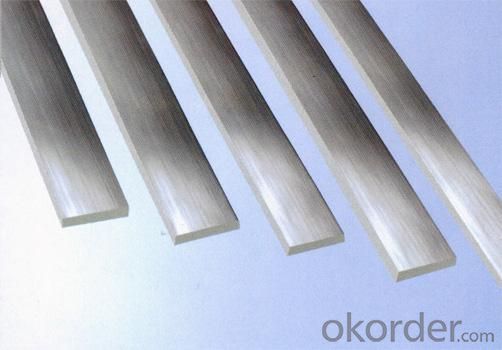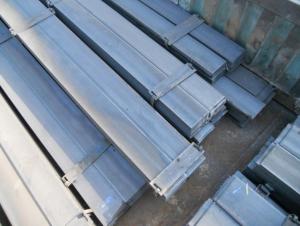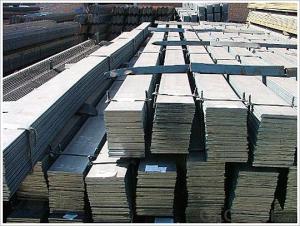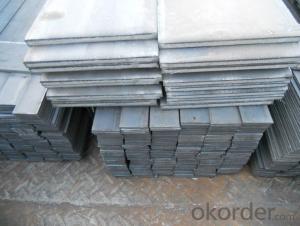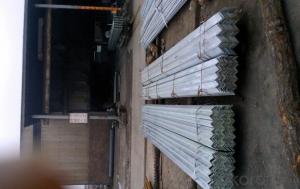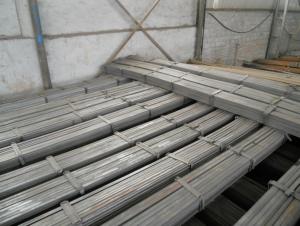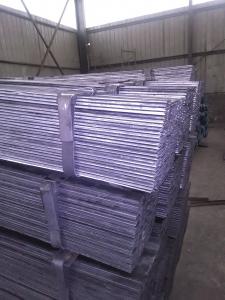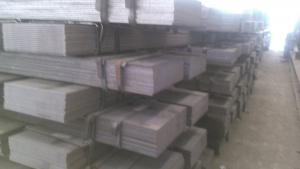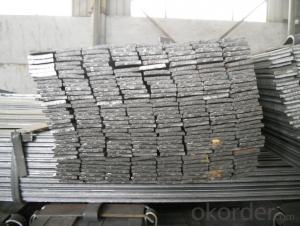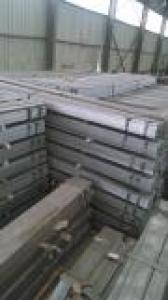high quality flat bar
- Loading Port:
- China Main Port
- Payment Terms:
- TT OR LC
- Min Order Qty:
- -
- Supply Capability:
- -
OKorder Service Pledge
OKorder Financial Service
You Might Also Like
Product Description:
Product Description:
Specification of Mild Steel Flat Bar
Commodity: Mild Steel Flat Bar
Standard: GB;JIS
Material: Q195-235;SS400
Brand name: FLATSPACE
Origin place: China
Thickness: 3mm-30mm
Width:20mm-200mm
Length: Max 12m
Certification: SGS/BV
Chemical composition of Q235
Alloy No | Grade | Element(%) | ||||
C
| Mn
| S
| P
| Si
| ||
Q235
|
B
|
0.12—0.20 |
0.3—0.7 |
≤0.045 |
≤0.045
|
≤0.3
|
Physical properties of Q235
Alloy No | Grade | Yielding strength point(Mpa) | Tensile strength (Mpa) | Elongation after fracture(%) | ||||||
Thickness (mm) | Thickness (mm) | |||||||||
≤16 | >16--40 | >40--60 | >60--100 |
| ≤16 | >16--40 | >40--60 | >60--100 | ||
≥ | ≥ | |||||||||
Q235 |
B |
235 |
225 |
215 |
205 |
375--500 |
26 |
25 |
24 |
23 |
Usage/Applications of Mild Steel Flat Bar
Widely used for construction, Machinery manufacturing, Iron tower steel structure, Shipbuilding; Steel grating, Staircase, Bridge, Viaduct, Railway spare parts, Boilers making etc.
Packaging & Delivery of Mild Steel Flat Bar
Packaging Details: The Mild Steel Flat Bars are packed in bundles and loaded in 20 feet/40 feet container, or shipped by bulk cargo ,also we can do as customer's requirements.
Delivery Details:30~45 days upon the receipt of buyer payment by T.T. or L/C.
Production Flow of Mild Steel Flat Bar
The Mild steel flat bar is made through three processes:
1.Feeding the material: Feeding the row material (the steel plate) to Slitting Line.
2.Slitting:The steel plate would be slitted into expected width by lengthways cutter.
3. Leveled and cutting: The plat bar would be ground into level by the grinder and then cut into required length
- Q: Can steel flat bars be used for fencing or security purposes?
- Certainly! Steel flat bars have numerous applications in fencing and security. Their robustness and durability make them ideal for building strong and secure barriers. You can utilize them to construct perimeter fences, gates, or security grilles to safeguard properties, commercial buildings, or restricted areas. Achieving a solid and impenetrable structure is possible by welding, bolting, or mounting steel flat bars. Furthermore, their height, length, and design can be customized to meet specific security needs. The resistance of steel flat bars to corrosion and weathering guarantees their long-lasting performance, making them a top-notch option for fencing and security purposes.
- Q: Can steel flat bars be used in food processing applications?
- Yes, steel flat bars can be used in food processing applications. Steel is a common material choice in the food industry due to its durability, strength, and resistance to corrosion. Flat bars made of stainless steel are particularly suitable for food processing applications as they are non-reactive and do not leach any harmful substances into the food. Stainless steel flat bars are also easy to clean and maintain, making them a hygienic choice for food processing equipment and surfaces. Additionally, steel flat bars can be easily fabricated and shaped to meet the specific requirements of food processing applications, making them a versatile option in this industry.
- Q: How do steel flat bars compare to copper flat bars?
- Steel flat bars are generally stronger and more durable than copper flat bars. Steel has a higher tensile strength and is less prone to bending or warping under heavy loads. Additionally, steel is more resistant to corrosion and can withstand harsh environmental conditions better than copper. However, copper flat bars have superior electrical conductivity and are often preferred for electrical and plumbing applications. Ultimately, the choice between steel and copper flat bars depends on the specific requirements and intended use of the material.
- Q: Are steel flat bars suitable for load-bearing applications?
- Yes, steel flat bars are suitable for load-bearing applications. They are commonly used in construction and engineering projects where strength and durability are required to support heavy loads. The flat shape of the bar provides stability and resistance to bending or warping under pressure, making it an ideal choice for load-bearing purposes.
- Q: What are the weight calculations for steel flat bars?
- The weight calculations for steel flat bars depend on the dimensions and density of the specific steel being used. To calculate the weight of a steel flat bar, you would typically multiply the cross-sectional area of the bar by its length and density. The cross-sectional area of a flat bar can be calculated by multiplying its width by its thickness. For example, if a flat bar has a width of 2 inches and a thickness of 0.25 inches, the cross-sectional area would be 0.5 square inches. To determine the weight, you would then multiply the cross-sectional area by the length of the bar and the density of the steel. The density of steel can vary depending on the specific alloy, but a common value is around 7.85 grams per cubic centimeter (or 7850 kilograms per cubic meter). So, if we take the example above and assume a length of 10 feet (or 120 inches), the weight of the steel flat bar can be calculated as follows: Weight = Cross-sectional area x Length x Density Weight = 0.5 square inches x 120 inches x 7850 kilograms per cubic meter Note that the units need to be consistent, so if you're using inches for the dimensions, you may need to convert the density to pounds per cubic inch or ounces per cubic inch. It's important to note that these weight calculations are based on the assumption of a solid steel flat bar. If the bar has any hollow or cut-out sections, the weight calculation would need to be adjusted accordingly. Additionally, different steel alloys may have different densities, so it's always best to consult the specific density for the type of steel you are working with.
- Q: Are steel flat bars commonly used in the manufacturing industry?
- Yes, steel flat bars are commonly used in the manufacturing industry. They are versatile and widely used for various applications such as construction, fabrication, and machinery. Steel flat bars are known for their strength, durability, and cost-effectiveness, making them a popular choice for manufacturers. They can be easily shaped, cut, and welded, allowing for customization and flexibility in design. Additionally, steel flat bars provide stability and support, making them suitable for structural purposes in buildings and infrastructure projects. Overall, steel flat bars play a crucial role in the manufacturing industry due to their many advantages and wide range of applications.
- Q: Are steel flat bars easy to work with?
- Yes, steel flat bars are generally easy to work with. They can be cut, bent, drilled, and welded easily, making them suitable for various construction and DIY projects.
- Q: Construction of electrical grounding steel flat buried anti-corrosion requirements, galvanized steel flat welding parts should be done anti-corrosion treatment, not welding parts are also doing anti-corrosion treatment?
- Galvanized steel itself anti-corrosion, if there is no welding parts, then no longer do anti-corrosion treatment
- Q: What is the maximum load capacity of a steel flat bar?
- The maximum load capacity of a steel flat bar depends on various factors such as the dimensions of the bar, the type of steel used, and the specific application. To determine the maximum load capacity, it is necessary to consult engineering calculations, load tables, or consult a structural engineer who can analyze the specific requirements and provide accurate load capacity information.
- Q: What are the standard tolerances for width and thickness in steel flat bars?
- The standard tolerances for width and thickness in steel flat bars can vary depending on the specific industry or application requirements. However, there are generally accepted tolerances that are commonly used. For width, the standard tolerances typically range between +/- 0.005 to 0.030 inches, or +/- 0.13 to 0.76 millimeters. These tolerances ensure that the width of the steel flat bar remains within a specified range, allowing for consistency in manufacturing and ensuring that the final product meets the required dimensions. Regarding thickness, the standard tolerances for steel flat bars again depend on the specific application. However, a common tolerance range for thickness is typically between +/- 0.010 to 0.060 inches, or +/- 0.25 to 1.52 millimeters. These tolerances ensure that the thickness of the steel flat bar remains within a specified range, allowing for uniformity in production and ensuring that the final product meets the required thickness requirements. It is important to note that these tolerances are generalized and may vary depending on the specific industry or application. It is always recommended to consult the relevant industry standards or specifications to determine the precise tolerances required for a particular steel flat bar application.
Send your message to us
high quality flat bar
- Loading Port:
- China Main Port
- Payment Terms:
- TT OR LC
- Min Order Qty:
- -
- Supply Capability:
- -
OKorder Service Pledge
OKorder Financial Service
Similar products
Hot products
Hot Searches
Related keywords
